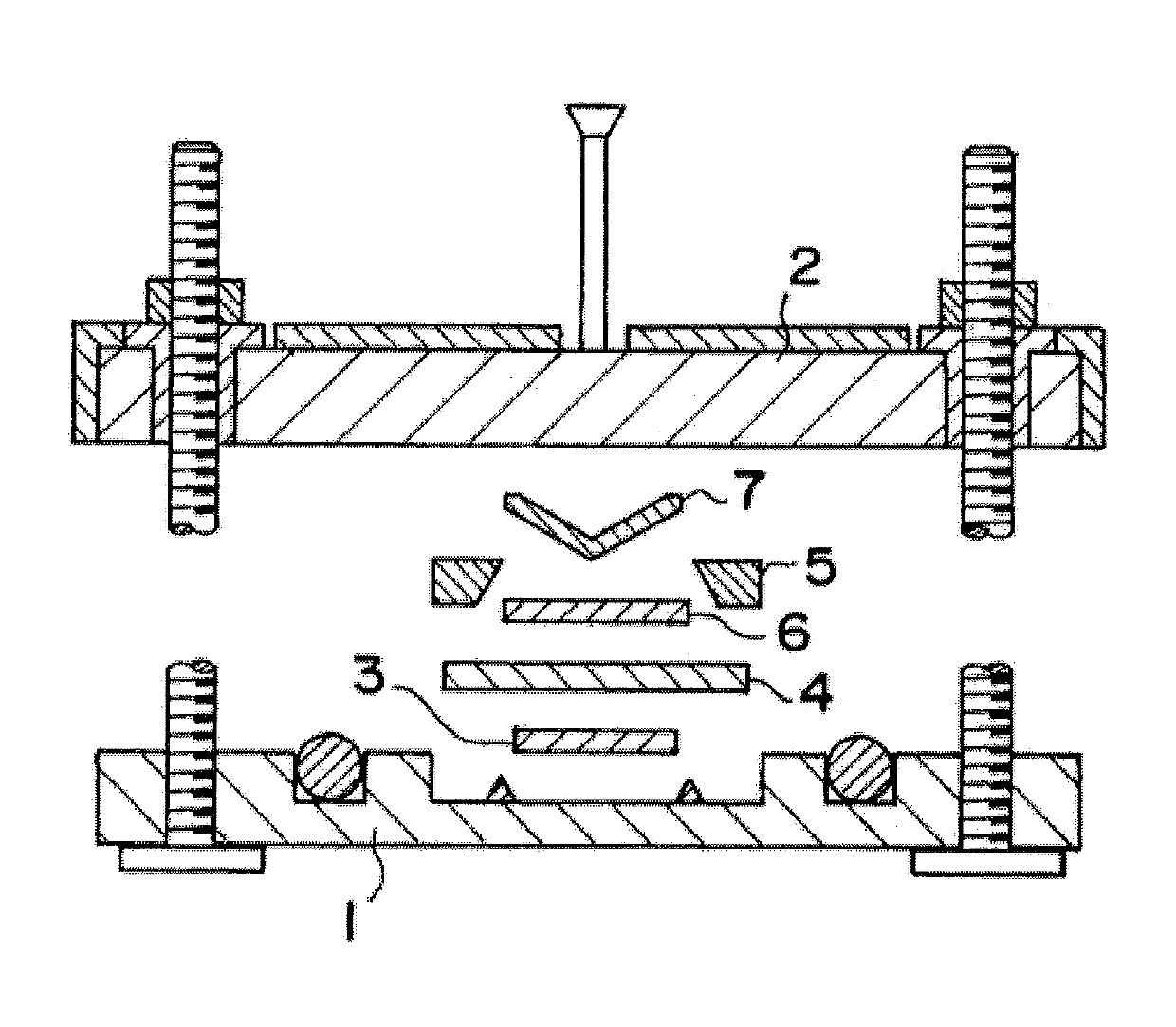Method of manufacturing a positive electrode active material for lithium secondary batteries
a technology of active materials and lithium secondary batteries, which is applied in the direction of sustainable manufacturing/processing, manganates/permanentanates, nickel compounds, etc., can solve the problems of reducing the cycle characteristics or storage characteristics, and the adverse effects of battery characteristics vary
- Summary
- Abstract
- Description
- Claims
- Application Information
AI Technical Summary
Benefits of technology
Problems solved by technology
Method used
Image
Examples
example 1
[0130]Lithium carbonate, electrolytic manganese dioxide (TG weight reduction at the time of heating to 200° C. to 400° C.: 3.0%), magnesium oxide, lithium tetraborate, and aluminum hydroxide were weighed to obtain the composition indicated in Table 1, and the materials were mixed with a precision mixing machine. Thereby, a mixed raw material was obtained.
[0131]The obtained mixed raw material was filled in a calcination vessel (crucible made of alumina, size=length*width*height=10*10*5 (cm)), such that the ratio of the open area and the packing height (open area cm2 / packing height cm) would be 100. The apparent density of the raw material at this time was 1.1 g / cm3. The raw material was calcined for 15 hours at 900° C. in an electric furnace, and the calcination product was cracked with a shear crusher. Thus, a powder of spinel type lithium manganate was produced.
[0132]
TABLE 1ComparativeExample 1Example 1Example 5Example 6Example 7Example 8,Example 9Li4.34.23.84.34.34.34.3(mass %)Mn5...
example 2
[0136]A powder (sample) of lithium manganate was obtained in the same manner as in Example 1, except that the temperature for water washing was changed to 50° C.
[0137]A portion of the powder of lithium manganate before being dried was collected and analyzed, and the primary oxygen release temperature thereof was 721° C.
example 3
[0138]A powder (sample) of lithium manganate was obtained in the same manner as in Example 1, except that the drying temperature after magnetic separation was changed to 300° C., and the water vapor elimination rate was changed to 0.008 g / sec.
[0139]A portion of the powder of lithium manganate before being dried was collected and analyzed, and the primary oxygen release temperature thereof was 723° C.
PUM
| Property | Measurement | Unit |
|---|---|---|
| temperature | aaaaa | aaaaa |
| temperature | aaaaa | aaaaa |
| temperature | aaaaa | aaaaa |
Abstract
Description
Claims
Application Information
 Login to View More
Login to View More - R&D
- Intellectual Property
- Life Sciences
- Materials
- Tech Scout
- Unparalleled Data Quality
- Higher Quality Content
- 60% Fewer Hallucinations
Browse by: Latest US Patents, China's latest patents, Technical Efficacy Thesaurus, Application Domain, Technology Topic, Popular Technical Reports.
© 2025 PatSnap. All rights reserved.Legal|Privacy policy|Modern Slavery Act Transparency Statement|Sitemap|About US| Contact US: help@patsnap.com

